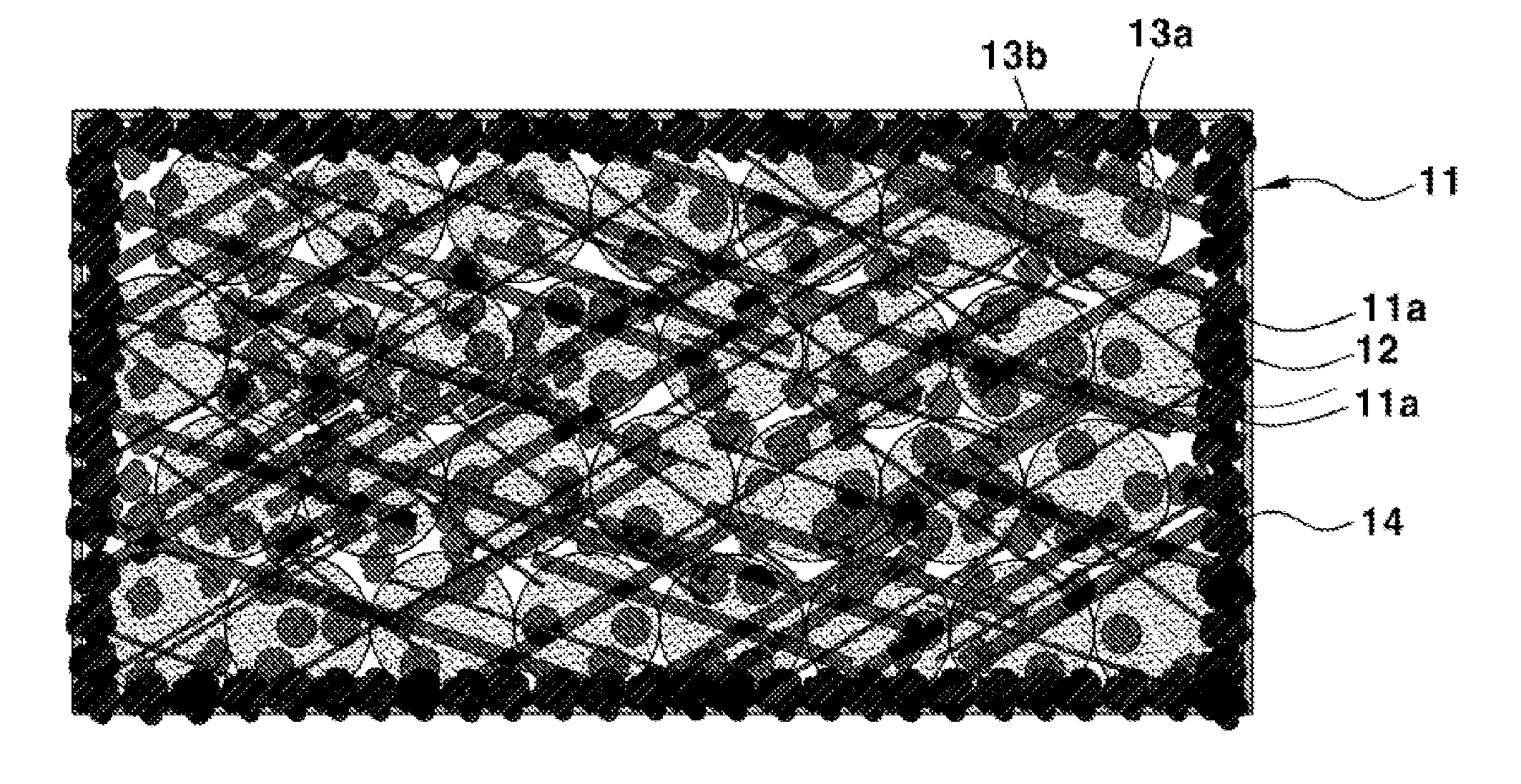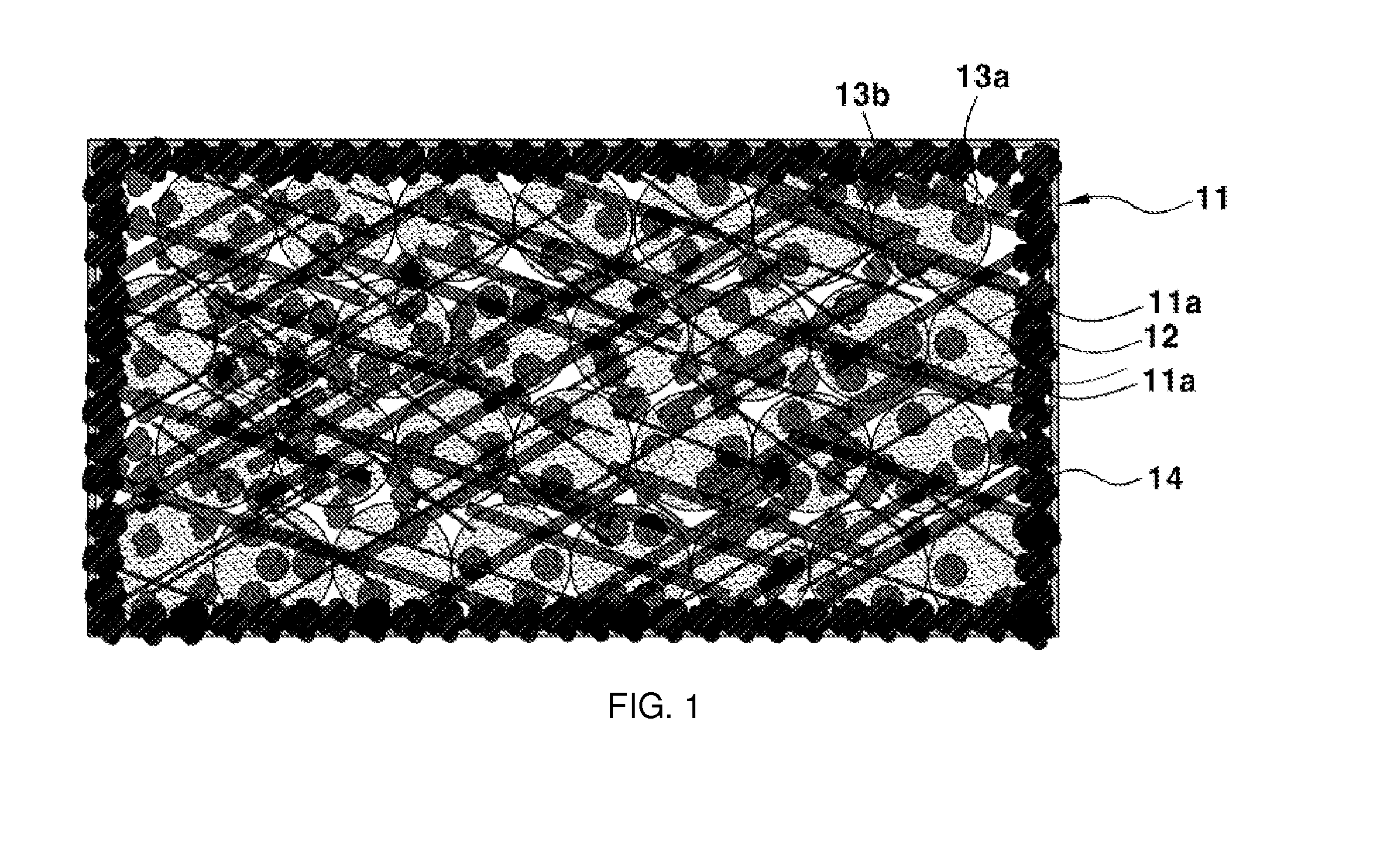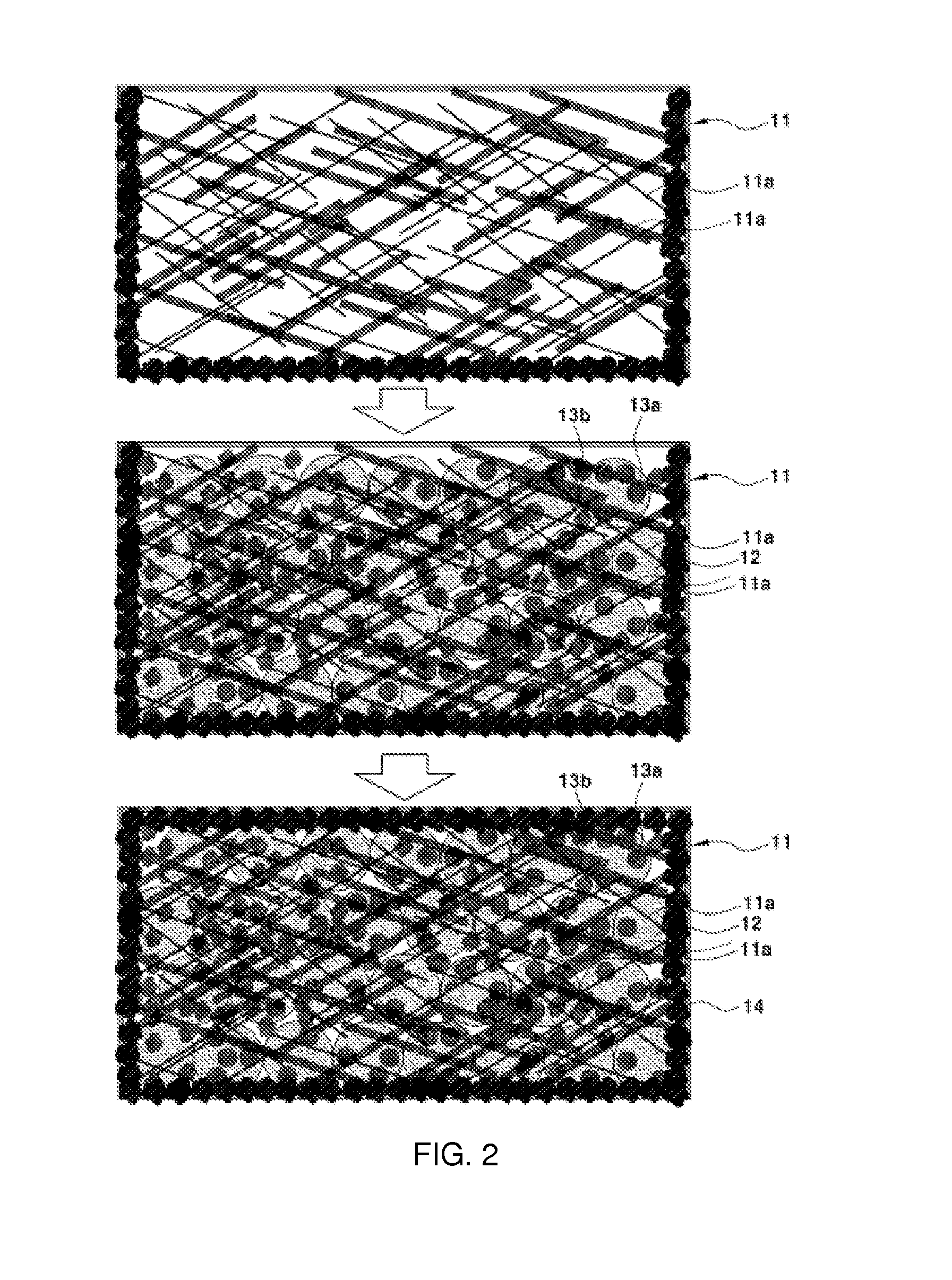Cathode for lithium-sulfur battery
a lithium-sulfur battery and cathode technology, applied in the direction of electrochemical generators, cell components, impregnation manufacturing, etc., can solve the problems of sulfur and a conducting material that have not been mixed sufficiently to have an even contact area, the charge/discharge efficiency and energy efficiency may be reduced, and the contact area may be reduced. , to achieve the effect of improving electrical conductivity, improving charge efficiency, and stably maintaining conductivity
- Summary
- Abstract
- Description
- Claims
- Application Information
AI Technical Summary
Benefits of technology
Problems solved by technology
Method used
Image
Examples
example 1
[0064]A carbon structure (50 mm×50 mm×0.2 mm) for manufacturing an electrode was prepared by cutting a carbon structure having a porosity of about 87%, which was purchased from JNTG, South Korea.
[0065]The prepared carbon structure was coated with nanogranular Ketjen Black having a particle size of about 30 nm by a casting method to form a coating layer on the five surfaces except the front surface and the coating layer had a thickness of about 10 μm as shown in FIG. 2.
[0066]Within the carbon structure of which the five surfaces were coated with the conducting material, slurry containing a sulfur and a conducting material was impregnated. The sulfur had a spherical shape and had a sized of about 3 μm in diameter. The sulfur in the slurry was inserted in to pores of the prepared carbon structure. The sulfur and the conducing material (CNT) were present in the form of slurry together with a PVDF binder dissolved in NMP. The mixture was formed into slurry containing the sulfur, the cond...
examples 2 to 4
[0068]Each cathode for lithium-sulfur battery was manufactured as described in Example 1 but a different kind of a conducting material and a different coating method as shown in Table 1 below were used.
experimental example 1
[0071]A scanning electronic microscope (SEM) was used to provide a microscopic view of the conducting material coating layer formed on the surfaces of the cathode for lithium-sulfur battery manufactured in Example 1. As shown in FIG. 3, the sulfur active material may be contained in a sparse region within the carbon structure as shown on the left picture of FIG. 3 and the conducting material coating layer may be densely formed on a surface region as shown on the right picture of FIG. 3.
PUM
 Login to View More
Login to View More Abstract
Description
Claims
Application Information
 Login to View More
Login to View More - R&D
- Intellectual Property
- Life Sciences
- Materials
- Tech Scout
- Unparalleled Data Quality
- Higher Quality Content
- 60% Fewer Hallucinations
Browse by: Latest US Patents, China's latest patents, Technical Efficacy Thesaurus, Application Domain, Technology Topic, Popular Technical Reports.
© 2025 PatSnap. All rights reserved.Legal|Privacy policy|Modern Slavery Act Transparency Statement|Sitemap|About US| Contact US: help@patsnap.com



